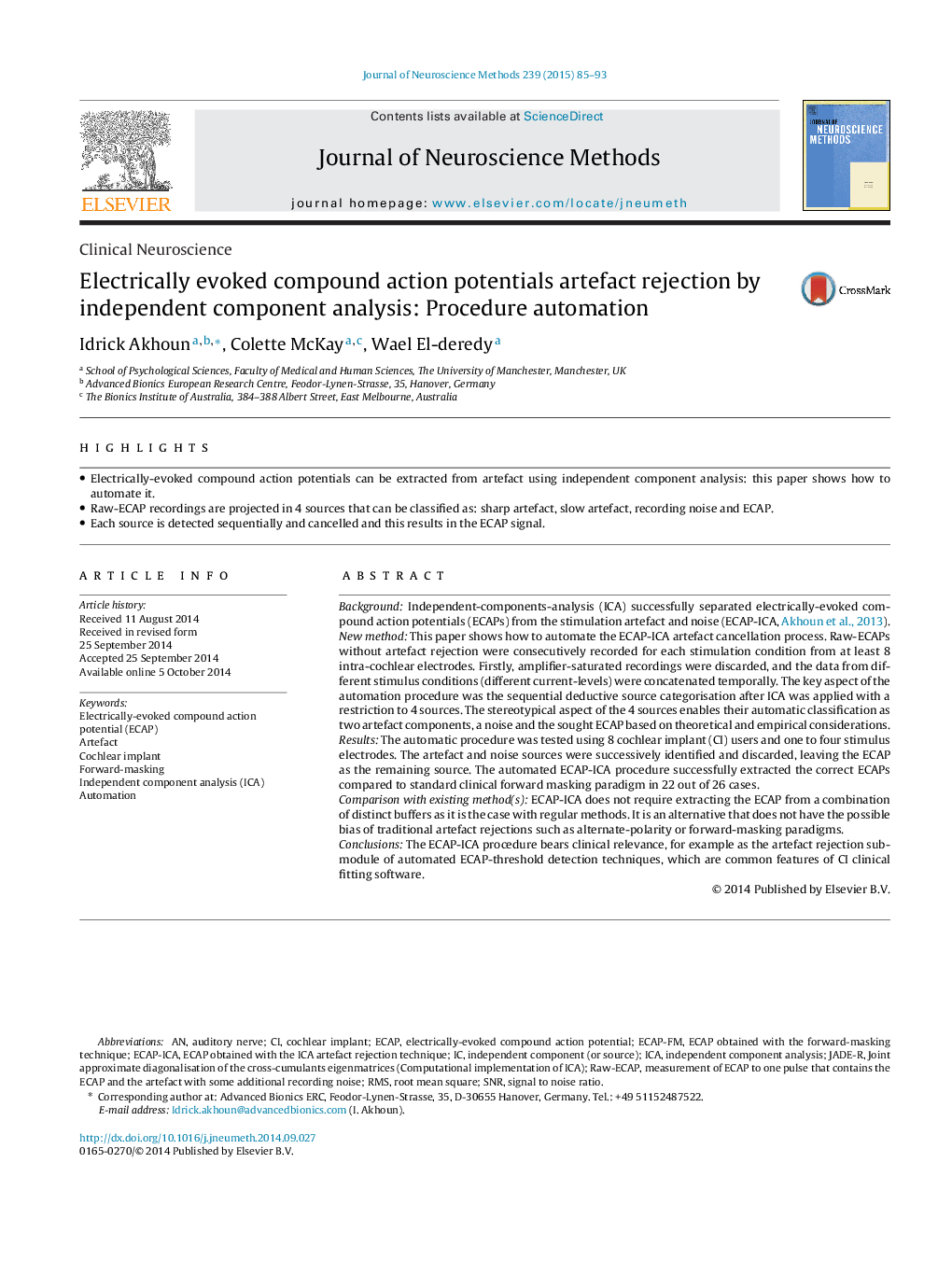| کد مقاله | کد نشریه | سال انتشار | مقاله انگلیسی | نسخه تمام متن |
|---|---|---|---|---|
| 6268527 | 1614630 | 2015 | 9 صفحه PDF | دانلود رایگان |
- Electrically-evoked compound action potentials can be extracted from artefact using independent component analysis: this paper shows how to automate it.
- Raw-ECAP recordings are projected in 4 sources that can be classified as: sharp artefact, slow artefact, recording noise and ECAP.
- Each source is detected sequentially and cancelled and this results in the ECAP signal.
BackgroundIndependent-components-analysis (ICA) successfully separated electrically-evoked compound action potentials (ECAPs) from the stimulation artefact and noise (ECAP-ICA, Akhoun et al., 2013).New methodThis paper shows how to automate the ECAP-ICA artefact cancellation process. Raw-ECAPs without artefact rejection were consecutively recorded for each stimulation condition from at least 8 intra-cochlear electrodes. Firstly, amplifier-saturated recordings were discarded, and the data from different stimulus conditions (different current-levels) were concatenated temporally. The key aspect of the automation procedure was the sequential deductive source categorisation after ICA was applied with a restriction to 4 sources. The stereotypical aspect of the 4 sources enables their automatic classification as two artefact components, a noise and the sought ECAP based on theoretical and empirical considerations.ResultsThe automatic procedure was tested using 8 cochlear implant (CI) users and one to four stimulus electrodes. The artefact and noise sources were successively identified and discarded, leaving the ECAP as the remaining source. The automated ECAP-ICA procedure successfully extracted the correct ECAPs compared to standard clinical forward masking paradigm in 22 out of 26 cases.Comparison with existing method(s)ECAP-ICA does not require extracting the ECAP from a combination of distinct buffers as it is the case with regular methods. It is an alternative that does not have the possible bias of traditional artefact rejections such as alternate-polarity or forward-masking paradigms.ConclusionsThe ECAP-ICA procedure bears clinical relevance, for example as the artefact rejection sub-module of automated ECAP-threshold detection techniques, which are common features of CI clinical fitting software.
Journal: Journal of Neuroscience Methods - Volume 239, 15 January 2015, Pages 85-93
